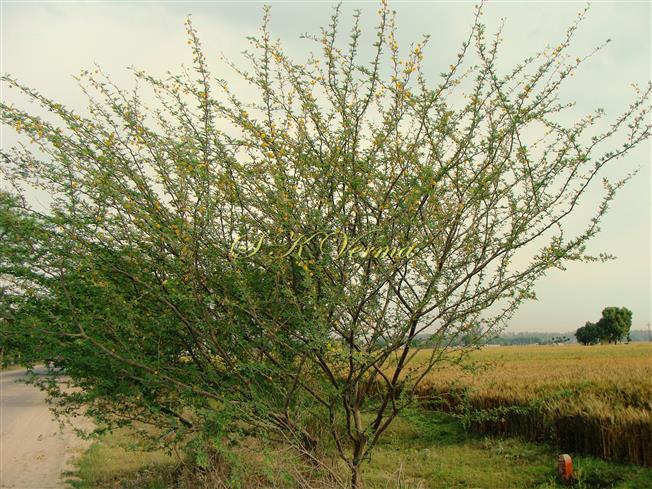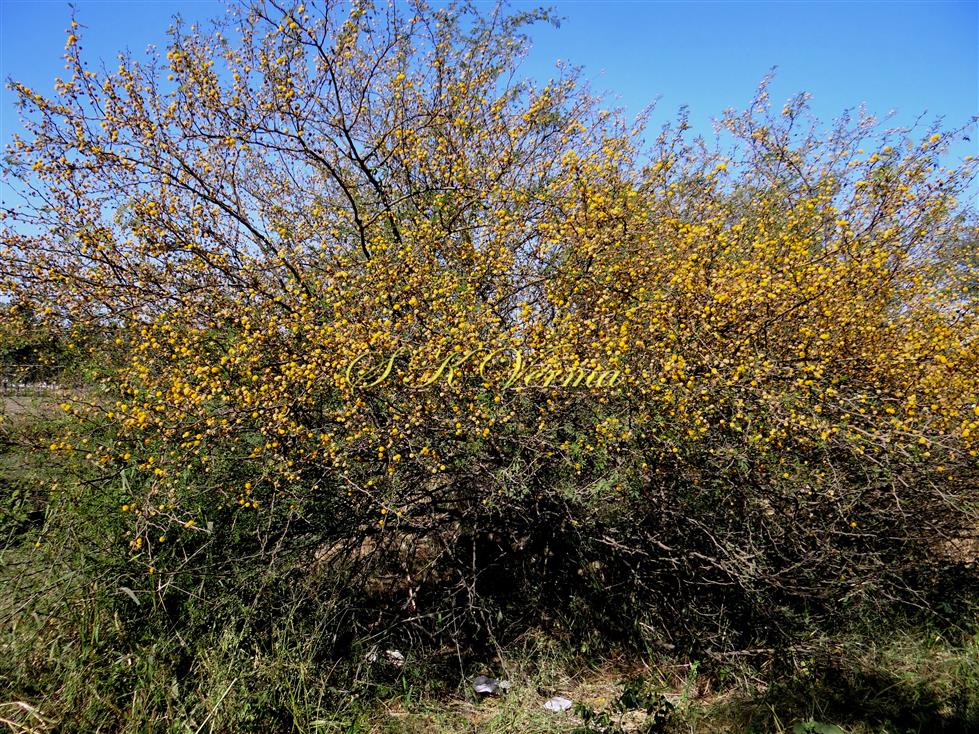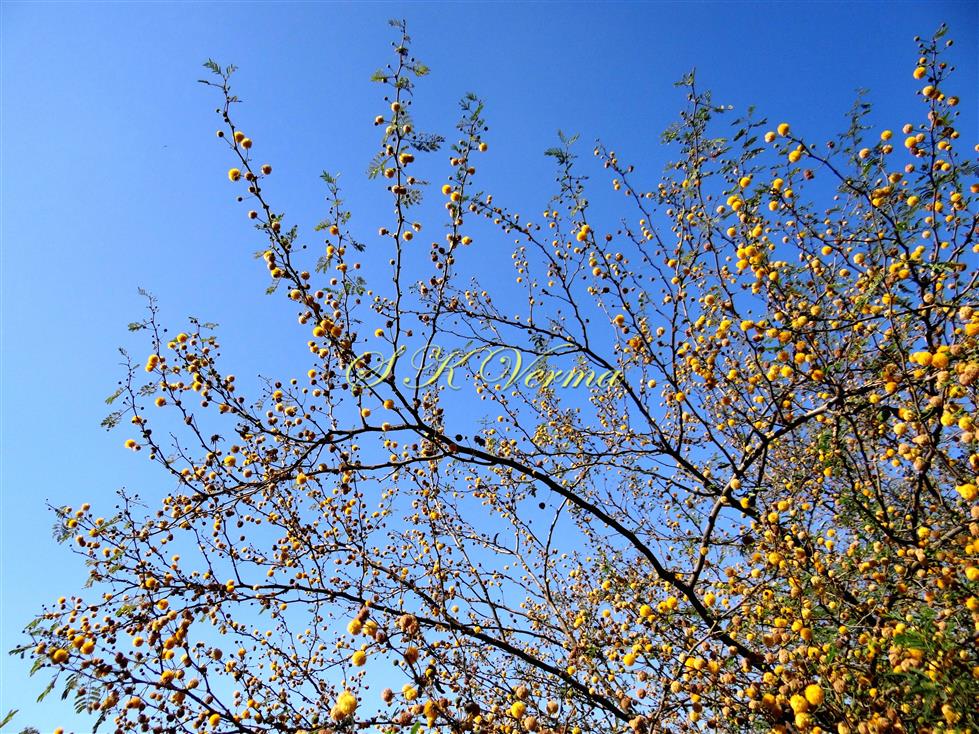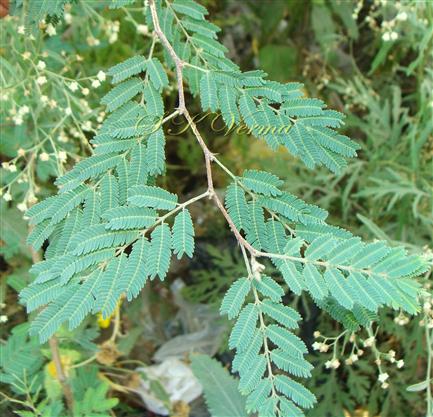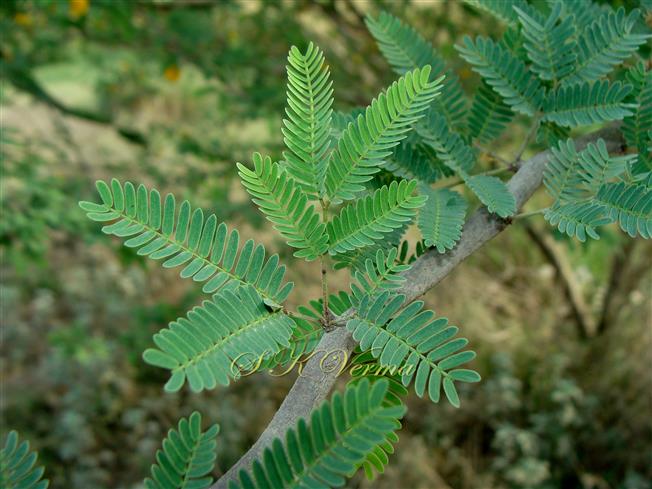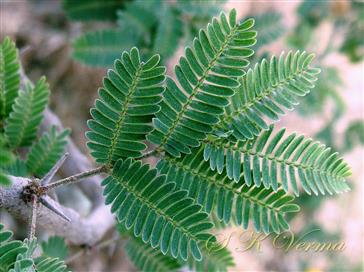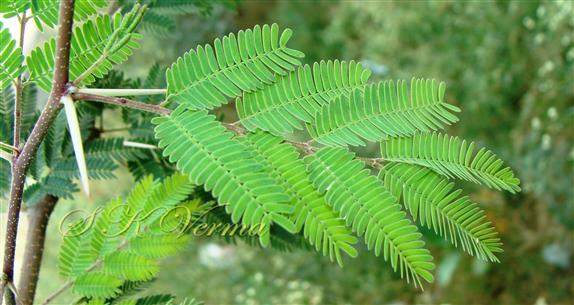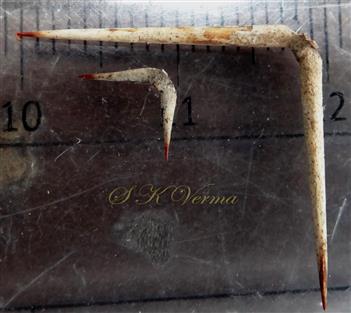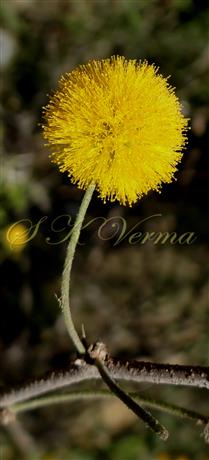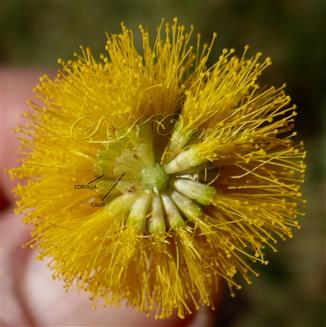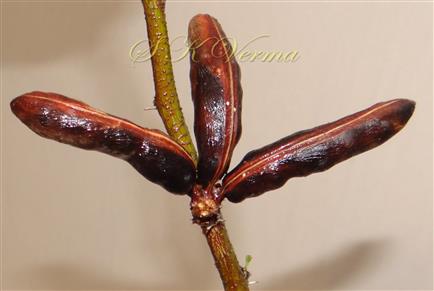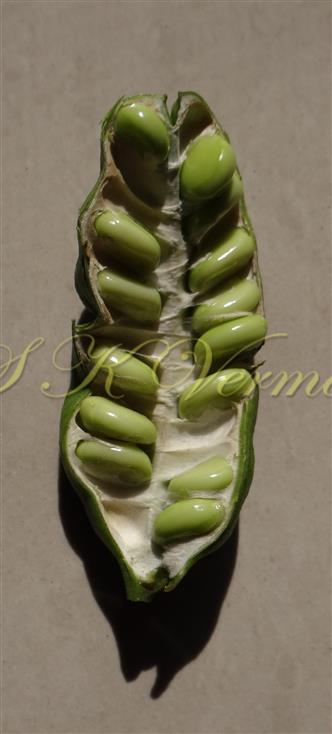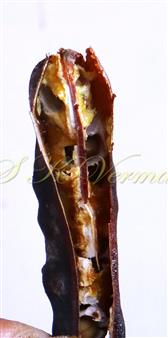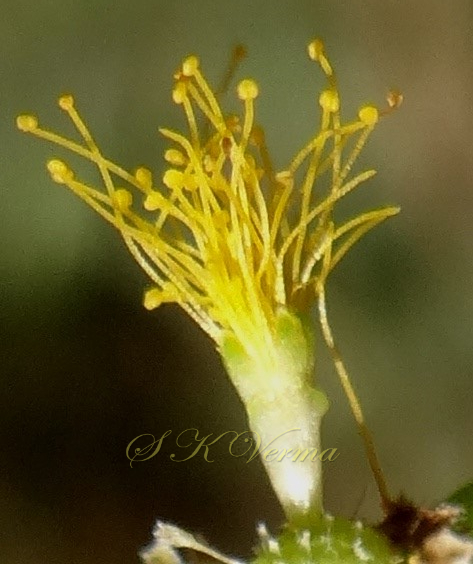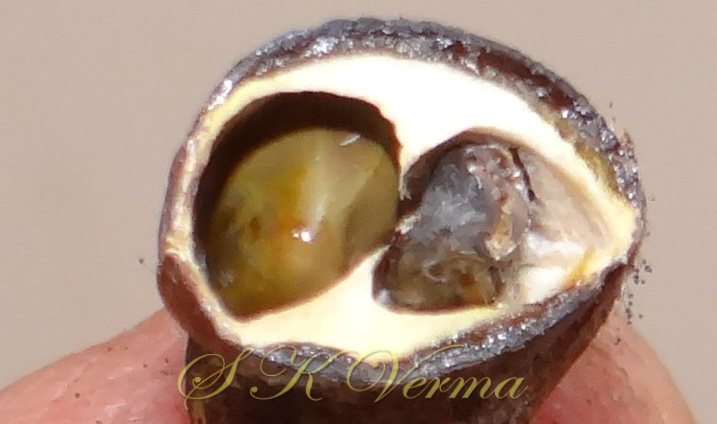VACHELLIA
Vachellia
Wight & Arn., Prodr. Fl. Ind. Orient: 272. 1834.
Trees or shrubs, sometimes climbing, always armed. Younger plants armed with spines (the modified stipules) situated near leaf bases, straight, deflexed or weakly falcate; sometimes with paired recurved prickles in addition to stipular spines. Glands usually present on the rachis and upper side of petiole. Leaves alternate, bipinnate, pinnae opposite. Inflorescence axillary racemes as spherical heads, rarely elongated spikes. Flowers yellow or creamish- white, bisexual, with numerous stamens; occasionally unisexual flowers in Vachellia nilotica. Calyx and corolla 4-5 lobed. Legumes dehiscent or indehiscent.
157 species
Vachellia farnesiana
Vachellia farnesiana
(L.) Wight & Arn., Prodr. Fl. Ind. Orient. 1: 272. 1834; Acacia farnesiana (Linn.) Willd., Sp. Pl. 4: 1083. 1806; Baker. in Hook. f., Fl. Brit. Ind. 2: 292. 1879; Parker, For. Fl. Punj. ed. 1. 189. 1918 (Reprint 1973); ed. 3. 190. 1956; Fl. Pak @ eFloras.org; Fl. China @ eFloras.org 10: 59; Mimosa farnesiana L., Sp. Pl. 521. 1753.
An evergreen shrub or small tree, 2-4 m tall, bark dark grey, smooth, branches slightly zigzag, marked with pale-grey or pale-brown raised lenticels, young twigs glabrescent. Spines stipular, in pairs below the petioles, straight, whitish, 7-20 mm, on short branches. Rachis 1.2-5.5 cm long, channelled above, pubescent; petiole ca. 1 cm long, usually with a small gland about the middle; rachis and rachillae ending in linear appendage. Leaves bipinnate; pinnae 3-8 pairs, ca. 1.2-2.5 cm long; leaflets 10-20 pairs, ca. 2.5-5 mm long and 1-1.5 mm wide, sessile, linear-oblong, acute, base oblique, glabrous to subglabrous. Flowers yellow, fragrant in globose pedunculate heads, 10-15 mm diameter; peduncles 1-3 cm long, in axillary fascicles up to 3, pubescent; bracts reflexed, ciliate, whorled at or near the apex of peduncle. Calyx 1.3-1.8 mm long, campanulate, 5-toothed, pale-yellow. Corolla ca. 2.5 mm long, 5-toothed, pale-yellow. Stamens indefinite, much exserted, ca. 2x as long as corolla, free or shortly connate at base; anthers small, eglandular. Ovary cylindric, puberulent, shortly stipitate, unilocular with many ovules, placentation marginal; style nearly equal to filaments; stigma small, terminal. Legumes brown, straight or curved, turgid, subcylindric, 4-7.5 cm x ca. 1.2 cm, mesocarp pulpy, seeds separated from each other by pith. Seeds many, up to 14 per pod, biseriate, brown, ovoid, ca. 6 mm.
Common Names: Mimosa Bush, Needle Bush, Cassie flower, Fragrant Acacia, Sweet Acacia, Sweet Wattle, Iron Wood; Durgandh Khair, Gandh Babool, Gu-Kikkar, Guh Babool, Vilayati Babool, Vilayati Kikkar (Hindi)
